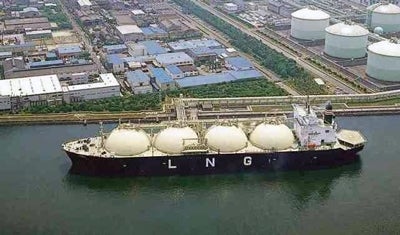
Fossil fuel companies and investors love to sell states on liquefied natural gas (LNG), calling it a temporary “bridge” to the renewable energy system we need to combat climate change. But it’s really a bridge to nowhere, and state and local officials are beginning to get hip to that fact.
Hawaii’s the latest to bypass LNG and head directly into a clean energy future. The state already has a law committed to generating all its electricity from renewable sources by 2045, and Gov. David Ige has staunchly opposed proposals for an LNG-fueled transition.
When, on July 15, the state utility regulator rejected Hawaiian Electric Company’s merger with Florida-based NextEra Energy in a plan that would convert its power plants to LNG, the LNG bridge for Hawaii fell.
That’s great news for the planet and those who support strong climate action. And it’s another nail in the coffin of the false notion that LNG’s somehow cleaner than other fossil fuels.
It isn’t. In fact, LNG may be as bad for the planet as coal, when all its environmental costs are considered. While burning natural gas does create less carbon dioxide pollution than oil or coal, its production also releases massive amounts of methane, a potent greenhouse gas that’s 87 times worse than CO at trapping heat in our atmosphere. Fracking and other common extraction methods also destroy habitat, pollute water and make people sick.
Those realities are causing communities around the country to reject LNG projects and call for a ban on fracking. In April Oregon LNG withdrew a proposal for a $6 billion LNG terminal and pipeline project in the town of Warrenton in the face of strong local opposition and investors who have grown nervous about the prospects for LNG. A massive LNG export facility proposed in Alaska — with a pipeline connecting the North Slope to a terminal on the Kenai Peninsula — also faces strong opposition, both locally and from national environmental organizations.
But the struggle’s far from over. There are 25 LNG export facilities that have been approved or proposed in the Gulf of Mexico. Our nation should be focused, instead, on rapidly transitioning away from fossil fuels. Renewable energy makes sense, and anything that delays its adoption doesn’t, not in this rapidly warming world. LNG is dirty, risky and costly, both to consumers and the planet.
It’s time to burn this bridge, keep fossil fuels in the ground, and not look back.